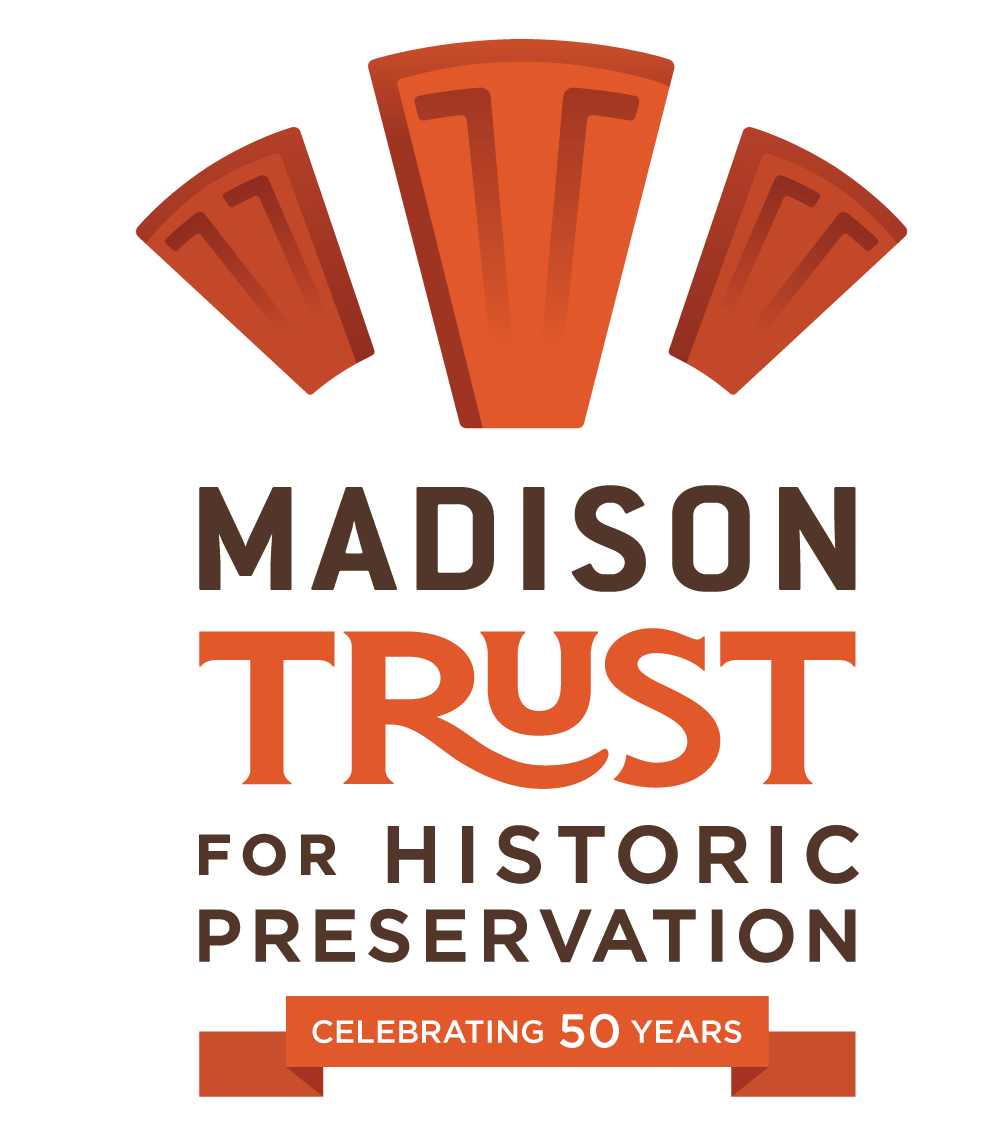Please Welcome the Community Education Committee
By Kevin Walters
In this month’s blog, we’re introducing the Community Education Committee, a new effort to expand and deepen how the Madison Trust engages with our neighbors in the Madison area. As part of the new committee’s rollout, we’ll be conducting an online survey during the month of September to gather feedback from the local historic preservation community about what activities and topics they would like us to pursue. We’d be grateful if you could take the Madison Trust Community Education Survey, also mentioned in this month’s Madison Trust newsletter, and spread the word to anyone you know who cares about historic preservation. The Community Education Committee will also be continuing to spread the word about the City of Madison’s “Underrepresented Communities Historic Resource Survey” report. In July and August, the Madison Trust conducted a three-part virtual series, which we encourage everyone to check out on our website.
A map of Madison color-coded by the Home Owners’ Loan Corporation in 1937 to indicate desirable and undesirable neighborhoods. Maps like these informed the discriminatory housing policies known as “redlining.” Photo courtesy of the Mapping Inequality website, dsl.richmond.edu. Click to view full screen.
Both the Community Education survey and the Underrepresented Communities report align well with the Community Education Committee’s strategic focus. As we were convening our first virtual meeting during a pandemic, and then continued biweekly Zoom meetings throughout a summer of widespread Black Lives Matter protests, we realized that our educational efforts had to start with a lot of listening.
NAACP Protest in the Capitol Rotunda in 1961. Photo from the Underrepresented Communities Historic Resources Survey courtesy of the Wisconsin Historical Society. WHS# 84375.
John and Amanda Hill Grocery, 649-653 East Dayton Street (left) and William and Anna Mae Miller House, 647 East Dayton Street (right), two significant places for the history of the Madison African American community. Photo from the City of Madison Historic Preservation Plan. Click to view full screen.
In particular, we decided that our committee, and the Madison Trust as a whole, should spend more of our time learning from those members of our community whose contributions have been underrepresented, whose aspirations have too often been overlooked, and whose stories have been outright forgotten. Figuring out how the trust can get better at listening and learning from these communities will be the primary goal of the Community Education Committee for at least the next two years and perhaps longer.
The committee’s strategic direction got a huge boost when the City of Madison completed their Underrepresented Communities Historic Resource Survey in July and released a draft report of their findings. While our committee was not yet in a position to organize a program, the Events Committee was way ahead of us. They organized online webinars with City Preservation Planner Heather Bailey, with Jason Tish of Archetype Historic Property Consultants and a co-author of the report, and with Bill Quackenbush, Tribal Historic Preservation Officer for the Ho-Chunk Nation.
Slide from part one of the Madison’s Trust’s online series in which Heather Bailey explained the process behind the Underrepresented Communities survey. Click to view full screen.
As Heather, Jason, and Bill explained, the resource survey and the resulting report were driven by a need to document the full fabric of Madison’s history in a way that had never been done before. In the words of the report, the purpose was therefore “not to write a definitive history of The City of Madison but rather to provide an overview of the history of the city with specific emphasis on six underrepresented communities including African American, First Nations, Hmong, Latino, LGBTQ, and Women.” The survey itself, conducted over the course of two years, captured and recorded 117 resources of historical interest, 98 of which are potentially eligible for Madison Landmark designations while the other 19 should become eligible in coming years. In fact, of those resources, 39 have already been designated as landmarks but in ways that neglected to document their significance for the history of one or more underrepresented groups.
“By telling better stories about our past, we can start preserving a broader scope of our history. But the process has only just begun.”
These widespread oversights among current landmarks shows how much our historical record needs correcting, and the Underrepresented Communities report outlines one way for the Madison historic preservation community to be part of the solution. By telling better stories about our past, we can start preserving a broader scope of our history. But the process has only just begun. City officials intend the draft report to be a working document and have been careful to explain it cannot be the final word.
As a community, we will need to continue updating, expanding, and deepening our knowledge and understanding of the full history of the Madison area— the place each of us call home. We all have a stake in ensuring the success of that ongoing project. The online survey we’re asking you to complete should take 4-5 minutes of your time, and it’s the first step in the Community Education Committee’s commitment to being part of the solution. The committee is chaired by Trust board member Kevin Walters with committee members Vicki Siekert, Margaret Nellis, Jennifer Gurske, Peg Davis. We hope you will join us in whatever way you can!
A map showing the distribution of historic resources associated with the African American Community in Madison. Jennifer L. Lehrke and Jason Tish, Underrepresented Communities Historic Resource Survey Report,” City of Madison, 2020, page 27. Click to view full screen.
